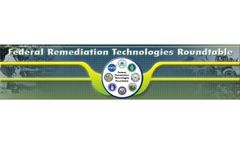Water Monitoring Articles & Analysis
10 articles found
The lengthy battle between people and varied bodily, chemical, and organic insults that trigger cell damage (e.g., merchandise of tissue harm, metabolites, and/or infections) have led to the evolution of assorted adaptive responses. These responses are triggered by recognition of damage-associated molecular patterns (DAMPs) and/or pathogen-associated molecular patterns (PAMPs), normally by cells ...
Economic and infrastructure problems hamper the availability of water for basic hygiene measure According to the World Health Organization (WHO) office of Water, Sanitation, and Hygiene (WASH), hand-washing is the No. 1 COVID-19 prevention strategy. That makes it difficult to grapple with the COVID-19 pandemic in Venezuela, where only 18% of citizens have reliable access to safe water. But the ...
Whereas the hygienic condition of drinking and bathing water by law must be monitored by culture-based methods, for quantification of microbes and antibiotic resistance in soil or the aquatic environment, often molecular genetic assays are used. ...
This study represents the first systematic review and meta-analysis conducted to assess the association between swimming in recreational water and the occurrence of respiratory illness. Most studies focus their attention on gastrointestinal illnesses occurring after exposure to microbial polluted water. ...
Perception of tastes and odors in water is a major interest for water producers and distributors because off-flavors in tap water are associated with health risk by consumers. However, the taste of water is difficult to describe due to the medium itself which is supposed to have no taste. Classical sensory methodologies are difficult to adapt and only get part of the whole perception. This ...
The role of the water cycle in spreading human pathogenic influenza viruses is poorly studied and is not considered to be significant. ...
Swiftly identifying the two-phase flow that occurs in coolant channels is crucial for monitoring energy producing installations such as boiling water reactors. ...
The purpose of this study was to investigate the occurrence of antibiotic resistance genes (ARGs) in water used for irrigation in the Werribee River Basin, Australia, including river water and reclaimed effluent water (reclaimed water). ...
Epidermal conductance (g.min) is a measurement of water loss through the cuticle and stomata when stomatal conductance is minimal. Two pot experiments were conducted to evaluate genotypic variation in gmin for 10 to 12 rice cultivars (Oryza spp.) grown under flooded conditions. Epidermal conductance was estimated by measuring loss of water from the excised topmost fully-expanded leaves. ...
An emerging application involves the injection of water containing dissolved primary substrate (e.g. methane, toluene) and oxygen into ground water to support the co-metabolic breakdown of targeted organic contaminants. ...






